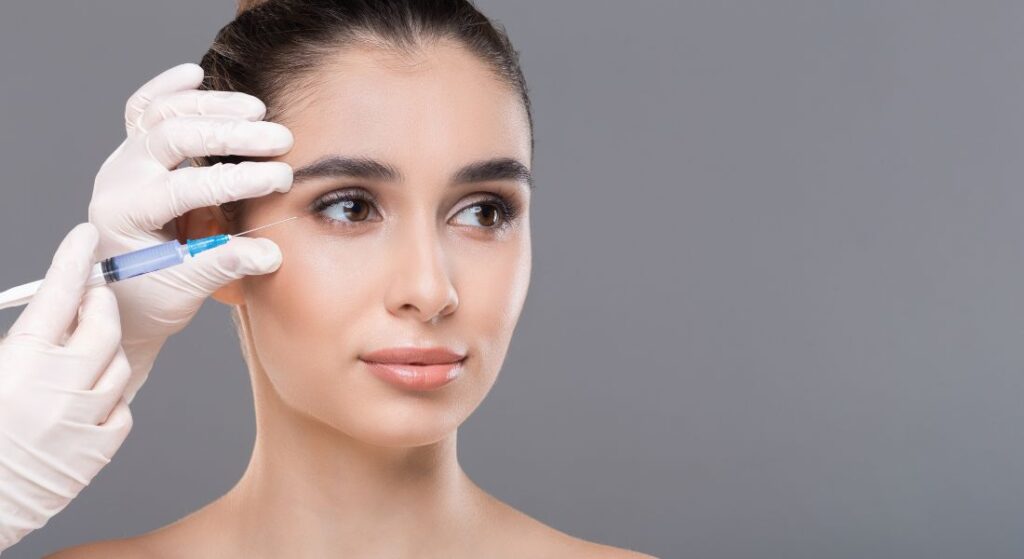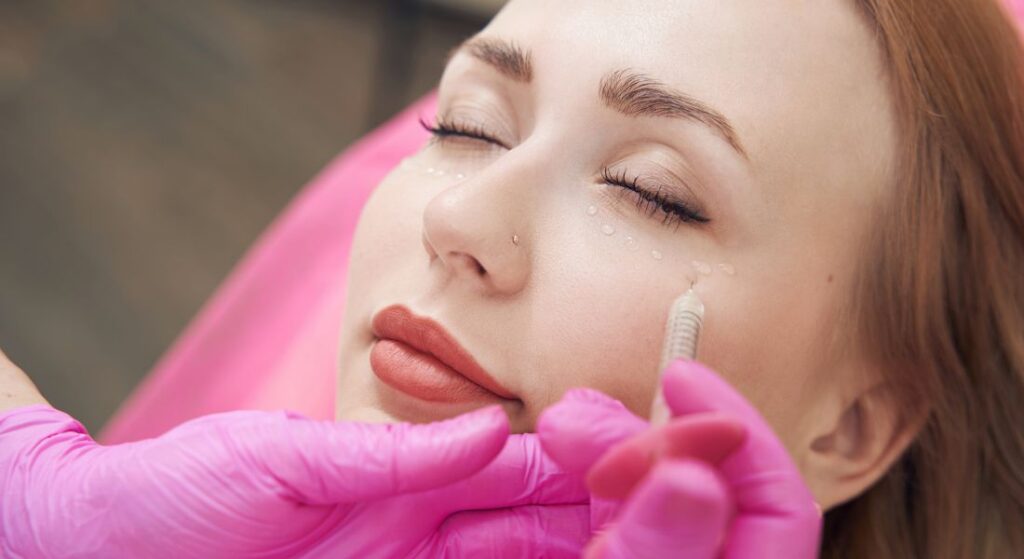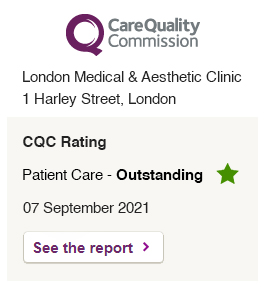
If you’ve been exploring facial rejuvenation options, you’ve probably heard of Sculptra an injectable treatment that goes beyond simply filling wrinkles. Unlike traditional dermal fillers, Sculptra works by stimulating your skin’s natural collagen production, leading to gradual, natural-looking results.
But while Sculptra has become a popular choice for restoring youthful volume and improving skin texture, it’s not the perfect fit for everyone. Like any aesthetic treatment, it has both advantages and drawbacks.
In this article, we’ll break down the pros and cons of Sculptra, explain how it works, and help you decide whether it might be the right choice for your aesthetic goals.
What Is Sculptra?
Sculptra is a unique type of injectable that acts as a biostimulator rather than a traditional filler. It’s made from poly-L-lactic acid (PLLA), a biodegradable compound that has been used safely in medical applications for decades including dissolvable stitches.
When injected into the skin, Sculptra doesn’t immediately add volume. Instead, it triggers your body’s natural collagen-building process over time. The result is a gradual restoration of facial fullness and firmness that can last up to two years or more.
Sculptra is often used to treat:
– Volume loss in the cheeks or temples
– Hollowness under the eyes
– Fine lines and wrinkles
– Sagging jawlines
– General facial thinning due to ageing or weight loss
It’s ideal for anyone seeking a subtle, long-lasting, and natural enhancement rather than an instant “filled” look.
How Sculptra Works
To understand Sculptra’s appeal, it helps to know what’s happening beneath the skin.
As we age, our natural collagen production declines usually starting in our 20s and accelerating through our 40s and 50s. Collagen gives our skin structure, elasticity, and volume, so when levels drop, wrinkles and sagging start to appear.
Sculptra addresses this issue at its root. When injected into targeted areas, its microparticles act as a framework that stimulates fibroblasts the cells responsible for collagen production. Over the next several weeks, your skin gradually produces new collagen around these particles, improving elasticity and restoring volume naturally.
The injected material itself is absorbed by the body within a few months, but the new collagen it generates remains, offering long-lasting rejuvenation.
The Key Benefits of Sculptra

Let’s start with the pros the reasons so many patients and clinicians love Sculptra.
1. Natural-Looking Results
One of the biggest advantages of Sculptra is how subtle and natural the results look. Because it works gradually, your face never appears “overdone” or suddenly altered. Friends and family usually just notice that you look fresher and more rested over time.
If you prefer a low-key approach to facial rejuvenation, Sculptra’s results blend beautifully with your natural features.
2. Long-Lasting Effects
Unlike traditional hyaluronic acid fillers, which typically last 6–12 months, Sculptra’s results can last up to two years or more.
That’s because it doesn’t just add temporary volume it helps your body rebuild its own structural support through collagen production. This longevity makes it a cost-effective option for those looking for sustainable improvement.
3. Stimulates Collagen Production
Most aesthetic injectables only fill or smooth the surface of the skin. Sculptra, on the other hand, improves the skin’s foundation by enhancing collagen.
Over time, this doesn’t just add volume it also improves skin texture, firmness, and elasticity, helping your skin look healthier even when the treatment’s direct effects fade.
4. Suitable for Larger Areas
Because Sculptra works gradually and spreads naturally within the skin, it’s particularly useful for treating larger areas of volume loss, such as:
– Cheeks
– Temples
– Jawline
– Lower face
This makes it ideal for overall facial rejuvenation rather than small, specific corrections.
5. Minimal Downtime
Another major benefit is the relatively quick recovery. Most people return to their usual activities on the same day or the next.
You might experience mild swelling, redness, or bruising at the injection sites, but these side effects usually resolve within a few days.
6. Works Well with Other Treatments
Sculptra can be safely combined with other procedures such as Botox, hyaluronic acid fillers, or laser treatments. This allows you to create a more comprehensive anti-ageing plan tailored to your needs.
The Potential Drawbacks of Sculptra
Of course, no treatment is perfect and understanding the downsides of Sculptra is essential before deciding if it’s right for you.
1. Gradual Results Require Patience
If you’re looking for instant results, Sculptra may not be the best choice.
Unlike fillers that show immediate improvement, Sculptra works gradually over several weeks. It typically takes three sessions spaced four to six weeks apart to achieve optimal results, with visible changes developing over time.
2. Requires Experienced Injection Technique
Because Sculptra is a biostimulator, precise injection depth and placement are crucial. If injected too superficially or unevenly, it can lead to complications such as lumps or uneven results.
That’s why it’s important to choose a qualified aesthetic specialist ideally someone experienced in administering Sculptra in London who understands both the product and facial anatomy.
3. Possible Temporary Side Effects
Like all injectables, Sculptra can cause mild and temporary side effects. These may include:
– Swelling or redness at injection sites
– Tenderness or itching
– Bruising
– Small lumps under the skin (usually temporary and resolve with massage)
Your clinician will likely advise you to follow the “rule of 5s”: massage the treated area for 5 minutes, 5 times a day, for 5 days to help the product distribute evenly.
4. Not Ideal for Everyone
Sculptra isn’t recommended for individuals with active skin infections, autoimmune conditions, or a history of keloid scarring.
It’s also not suitable if you’re pregnant, breastfeeding, or allergic to any component of the product.
5. Slightly Higher Cost
Because Sculptra usually requires multiple treatment sessions, the overall cost can be higher than that of a single filler session.
However, the longevity and collagen-boosting benefits often balance out the price over time.
6. Maintenance Treatments May Be Needed
Although Sculptra offers long-lasting results, collagen continues to break down naturally as you age.
You may need a maintenance session every 18–24 months to keep your results looking fresh.
Comparing Sculptra to Traditional Dermal Fillers

To help you decide whether Sculptra is right for you, let’s look at how it compares with more traditional fillers such as Juvederm and Restylane.
Sculptra’s main ingredient is poly-L-lactic acid, which works by stimulating your skin’s natural collagen production over time. In contrast, traditional fillers use hyaluronic acid to instantly add volume and smooth out wrinkles.
When it comes to results, Sculptra develops gradually, with improvements appearing over a few weeks or months as new collagen forms. Traditional fillers, on the other hand, deliver immediate results right after treatment.
Sculptra also tends to last longer up to two years or more, whereas most conventional fillers typically last six to twelve months. Because of this, Sculptra is ideal if you’re looking for overall facial rejuvenation or treating larger areas, while traditional fillers are better suited for specific wrinkles, lip enhancement, or contouring small areas.
Both options involve minimal downtime, allowing you to return to your normal routine soon after treatment. However, Sculptra usually has a higher initial cost, though its long-lasting effects can make it more cost-effective in the long run.
In short, fillers are perfect for quick fixes and instant volume, while Sculptra stands out for its gradual, natural-looking, and long-term rejuvenation.
What to Expect During Treatment
If you’re considering Sculptra, here’s a quick overview of what to expect:
1. Consultation: Your clinician evaluates your goals and facial anatomy.
2. Preparation: The skin is cleansed and numbed with a local anaesthetic.
3. Injection: Sculptra is injected into targeted areas using fine needles or cannulas.
4. Massage: The treated areas are gently massaged to help distribute the product.
5. Aftercare: You’ll receive detailed instructions including the “rule of 5s” massage technique.
The entire procedure typically takes around 30–45 minutes per session.
The Recovery Process

Downtime is minimal, but aftercare plays a big role in results.
You should:
1. Avoid intense exercise for 24 hours.
2. Sleep with your head slightly elevated.
3. Apply ice packs if you experience swelling.
4. Follow the massage routine to prevent lumps.
5. Stay hydrated and maintain a healthy lifestyle to support collagen production.
Most people notice improvement after the second session, with full results developing within 2–3 months.
Who Makes an Ideal Candidate?
Sculptra is well-suited for:
– Men and women aged 30–60 with early to moderate facial volume loss.
– Those seeking subtle, long-term rejuvenation instead of dramatic change.
– People willing to commit to a series of treatments and follow-up care.
If you prefer immediate results or are only targeting fine lines, another filler may be better suited.
Combining Sculptra with Other Treatments
Many patients choose to combine Sculptra with other treatments for enhanced results. For example:
– Botox: To relax dynamic wrinkles.
– Hyaluronic acid fillers: For instant plumping in specific areas like lips or nasolabial folds.
– Laser treatments: To improve skin tone and texture.
This combination approach can deliver both short-term and long-term benefits for complete facial rejuvenation.
Longevity and Maintenance
One of the main attractions of Sculptra is its durability. Once your collagen has built up, results typically last 18–24 months.
To maintain your refreshed look, most practitioners recommend a maintenance treatment once every 1.5 to 2 years.
Regular skincare, sun protection, and a balanced diet rich in vitamin C and amino acids can also help preserve collagen levels longer.
The Safety of Sculptra
Sculptra has an excellent safety record when administered by trained professionals. It’s FDA-approved and has been widely used in aesthetic medicine for nearly two decades.
The key is choosing a qualified practitioner who understands proper dilution, placement, and post-treatment care. This minimises the risk of complications and ensures natural, even results.
Sculptra vs. Surgery
For those seeking a middle ground between non-invasive treatments and full surgical procedures, Sculptra offers an appealing solution.
While facelifts can provide dramatic results, they involve downtime, anaesthesia, and higher costs. Sculptra, on the other hand, delivers gradual enhancement without surgery or long recovery.
It won’t replicate the lifting power of surgery, but it can delay the need for one and maintain a youthful, natural appearance.
FAQs About Sculptra:
1. How does Sculptra differ from regular dermal fillers?
Sculptra works very differently from traditional fillers. Instead of immediately adding volume with substances like hyaluronic acid, Sculptra stimulates your skin to produce its own collagen gradually. This means results appear more naturally over several weeks rather than instantly. The improvement is subtle and long-lasting, giving your skin a firmer and more youthful look that can last for up to two years or more.
2. When will I start seeing results from Sculptra?
You won’t see an overnight transformation with Sculptra. After your first session, your body begins to build new collagen slowly, and visible improvements usually appear after about four to six weeks. Many people start noticing that their skin feels firmer and looks smoother around this time. Since most treatment plans involve multiple sessions spaced a few weeks apart, your final results become more noticeable over the next few months, leaving you with a gradual, refreshed look that feels completely natural.
3. How many Sculptra treatments will I need?
The number of sessions you’ll need depends on your age, the amount of volume loss, and your aesthetic goals. Most people require around three treatment sessions, spaced about four to six weeks apart. During your consultation, your clinician will create a personalised plan based on your skin’s needs. Once your desired result is achieved, a single maintenance treatment every 18 to 24 months is usually enough to keep your collagen levels topped up and maintain that youthful fullness.
4. Does the treatment hurt?
Most patients describe the procedure as mildly uncomfortable rather than painful. Your practitioner will usually numb the area with a local anaesthetic cream before the injections, which helps reduce discomfort. You might feel a slight pressure or a small pinch as the needle enters the skin, but the sensation is brief. After the treatment, some people notice mild tenderness or swelling, which fades within a few days. If you follow the recommended aftercare, any discomfort should be minimal and short-lived.
5. Are there any side effects of Sculptra?
Sculptra is generally considered safe, but like all injectable treatments, there are possible side effects. You might experience some redness, swelling, or bruising at the injection sites, which typically resolves within a few days. Occasionally, small lumps may form under the skin, but these are usually temporary and can be prevented or reduced by following the massage routine your clinician recommends. The key to minimising side effects is choosing an experienced professional who understands the correct injection technique.
6. Can Sculptra be combined with other cosmetic treatments?
Yes, and this is actually one of the great advantages of Sculptra. It pairs well with other aesthetic procedures like Botox, hyaluronic acid fillers, and laser treatments. For instance, you might use Botox to smooth dynamic wrinkles and Sculptra to restore volume and firmness over time. Combining treatments can give you a more comprehensive rejuvenation, addressing both immediate and long-term concerns. Your practitioner can guide you on how to space and sequence treatments safely for the best outcome.
7. How long do Sculptra results last?
One of the main reasons people choose Sculptra is its longevity. Once your body has produced enough collagen, the effects can last anywhere from 18 to 24 months sometimes even longer with proper skincare and maintenance. Because it encourages your skin to rebuild itself, the results fade gradually rather than disappearing suddenly. Many people find that an occasional touch-up session every couple of years helps sustain the effect and keep their skin looking youthful and firm.
8. What should I do after the treatment?
Post-treatment care is important to get the best results. Your clinician will likely advise you to follow the “rule of 5s,” which means massaging the treated areas for five minutes, five times a day, for five days. This helps distribute the product evenly and reduces the risk of small nodules forming. You should also avoid strenuous exercise and alcohol for 24 hours, sleep with your head slightly elevated, and apply ice packs if you experience swelling. Staying hydrated and maintaining a healthy diet supports collagen production and helps your results last longer.
9. Who is the ideal candidate for Sculptra?
Sculptra is a great choice if you’re in your 30s to 60s and beginning to notice volume loss or sagging in areas like your cheeks, temples, or jawline. It’s ideal for anyone seeking a subtle, natural-looking improvement instead of an instant transformation. However, it might not be suitable if you’re pregnant, breastfeeding, or have certain skin conditions such as active infections or a history of keloid scarring. During your consultation, your clinician will review your medical history to determine if Sculptra is the right fit for you.
10. Why should I choose a professional for Sculptra treatment?
Choosing a skilled and qualified practitioner is absolutely crucial for safe and effective results. Sculptra requires precise injection techniques to ensure the product is placed correctly and evenly. When performed by an experienced specialist, the treatment delivers smooth, natural results with minimal risk of complications. At a reputable clinic, you’ll receive personalised care, proper aftercare instructions, and realistic guidance on what to expect. You can contact our aesthetic experts at LMA Clinic for professional advice and tailored Sculptra treatments that align with your goals.
Final Thoughts: Maximising Your Sculptra Facial Rejuvenation Results
Sculptra offers an advanced, non-surgical approach to facial rejuvenation by stimulating your skin’s natural collagen production rather than simply adding temporary volume. This collagen-boosting treatment helps you achieve smoother, firmer, and more youthful-looking skin that improves gradually and lasts for years. Visible results often begin to appear after a few weeks, with continued enhancement as your skin rebuilds its structure from within.
To maintain your refreshed appearance, it’s important to follow your clinician’s aftercare advice including the recommended massage routine and adopt a healthy lifestyle that supports collagen production. At the London Medical & Aesthetic Clinic, your practitioner will create a bespoke Sculptra treatment plan tailored to your skin type, facial structure, and rejuvenation goals. This may include combination therapies to deliver the most natural and long-lasting results possible.
If you’re considering Sculptra treatments in London, you can get in touch with us at the London Medical & Aesthetic Clinic to discuss your personalised rejuvenation plan and find out how this collagen-stimulating treatment can help you achieve natural, long-lasting results.
References:
1. Vu, M. et al. (2024) ‘Effectiveness and Safety of Sculptra Poly-L-Lactic Acid Injectable Implant in the Correction of Cheek Wrinkles’, Journal of Drugs in Dermatology, 23(1), pp. 1297-1305. Available at: https://pubmed.ncbi.nlm.nih.gov/38206151/
2. Christen, M.-O. (2023) ‘Collagen Stimulators in Body Applications: A Review Focused on Poly-L-Lactic Acid (PLLA)’, Clinical, Cosmetic and Investigational Dermatology, 16, pp. XXX-XXX. Available at: https://www.ncbi.nlm.nih.gov/pmc/articles/PMC9233565/
3. Kim, H. et al. (2022) ‘Poly-L-Lactic Acid Increases Collagen Gene Expression and Synthesis in Cultured Dermal Fibroblasts’, Journal of Cosmetic Dermatology, [online ahead of print]. Available at: https://www.ncbi.nlm.nih.gov/pmc/articles/PMC7992693/
4. Del Pino, M.L. et al. (2024) ‘Efficacy and Safety of Poly-L-Lactic Acid in Facial Aesthetics: A Systematic Review’, Polymers, 16(18), 2564. Available at: https://www.mdpi.com/2073-4360/16/18/2564
5. Fabi, S. & Bråsäter, D. (2025) ‘Letter to the Editor on: “Safety and Efficacy of Poly-L-Lactic Acid Filler (Gana V vs. Sculptra) Injection for Correction of the Nasolabial Fold: A Double-Blind, Randomized, Split-Face Controlled Trial”’, Aesthetic Plastic Surgery, 49, pp. 988-990. Available at: https://link.springer.com/article/10.1007/s00266-023-03736-x





